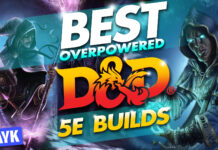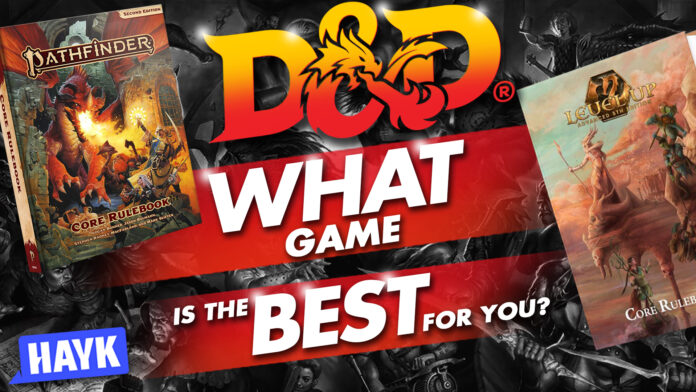
Even though they share the same history, D&D 5E and Pathfinder (2E) are two different beasts. These systems have respective communities, theory-crafters, debaters, and even gatekeepers. If you want to choose between D&D 5E and PF2E, you’ve come to the right place.
In this comprehensive article, we will examine the important bits and pieces of D&D (5E) and Pathfinder 2E. By analyzing the points in this article, you’ll find the best system that matches your preferences or playing style.
Pathfinder 2E vs. D&D 5E – A Detailed Outlook of Each Edition
New Game Adventure Rules
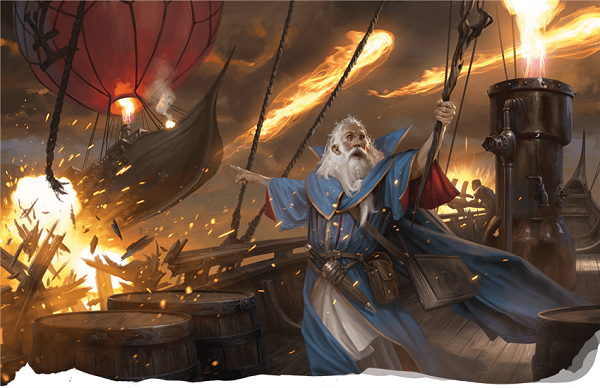
Adventuring is one of the major components of any tabletop RPG. Without a concise adventuring rule system, a tabletop RPG will get uninteresting really fast. Thankfully, both the 5E DnD and Pathfinder 2E have remarkable adventuring rules.
D&D 5E has a simplified adventuring system that can be picked up easily. If you’re a DM, you can just use the various encounter tables and adventuring rules presented in the Dungeon Master’s Guide. The rules are not complicated, and they leave a big space for creative freedom. This creative freedom can be a two-edged sword. You probably need to work harder to implement a custom adventuring system, but you won’t be restricted by any modular barriers.
If D&D 5E emphasizes flexible adventuring, Pathfinder 2E is all about adventure simulation. Pathfinder has detailed rules about daily adventuring, as well as extended crafting mechanics balanced between mechanics and flavor. A group of players who love deep simulation aspects will truly admire Pathfinder’s adventuring rules.
The Winner – Pathfinder 2E
Pathfinder takes the cake when it comes to adventuring superiority. There are lots of moving parts that players can enjoy. Also, Pathfinder DMs don’t need to spend their creative energy on making custom adventuring rules. The Pathfinder Core Rulebook contains a fleshed-out adventuring ruleset from the beginning.
Modular Convenience
A fully modular system is a complete package that covers the essential stuff of the game. Even though D&D 5E is a real modular system refined from the rule sets of old editions, there’s still a lot of hard work involved. D&D 5E DMs often add some custom rules to their games, unless they’re running strict Adventurer’s League sessions. If there’s a lot of winging involved in a system, its modular capability is somehow affected.
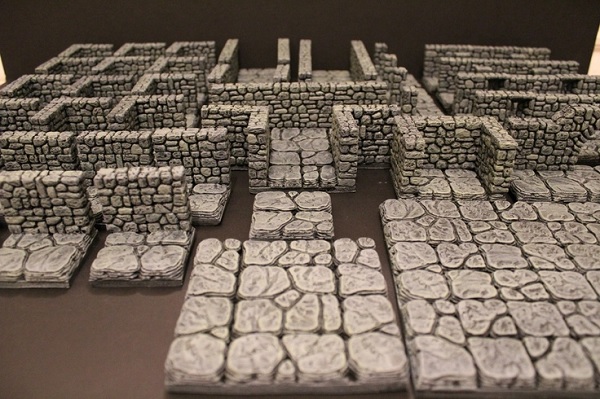
The 2E Pathfinder may be new, but it contains all of the rules needed for an awesome RPG experience. These rules focus on the aspects of effective class progression, mathematical crunch, simulationism, and spell power limitations. The PF2E system is somehow challenging to take in, but it has a convenient modular functionality – just like a bulky, durable car running on a strong engine.
The Winner – Pathfinder 2E
If you’re looking for a compact system that doesn’t need separated sourcebooks, Pathfinder is your best bet. While the learning curve is high, Pathfinder brings the right level of content without inducing information overload.
Ease of Access
Whether you believe it or not, ease of access is one of the barriers to entry in tabletop gaming. If an RPG is now beginner-friendly, it will have a hard time making a name in the market. This is the current situation of Pathfinder since it is always being compared to the all-popular D&D 5E.
The 2E actually came from the golden roots of Pathfinder 1st Edition. And as many tabletop gamers know, PF1E is the offspring of D&D 3.5E. You can see the similarity between PF2E and PF1E through the terminologies, feat distribution, magic system, and mathematical crunchiness. While veteran players think that the similarity is a great thing, lots of beginners have varying reactions. Many beginners hated PF2E’s difficulty curve and tons of rules to memorize. Some players, on the other hand, loved the overhauled combat mechanics.
The Winner – D&D 5E
D&D 5E is the winner of the simplicity crown. Ease of access is one of the strong selling points of 5E, and it will remain a progressive factor through the years. After all, players love to make their characters in less than an hour and jump into a game immediately. You just can’t do that in 2E Pathfinder!
Immediate Player Options
Having multiple player options is one of the reasons why tabletop games are appealing. D&D 5E, for example, has hundreds of options that players can choose from. You can access a detailed list of feats, custom abilities, equipment, and even mounts. The only limit that you should worry about is the DM’s permission.
Despite the number of options available for 5E, they are not readily accessible. If you have limited time for making a character, you just have to use the options presented by the Player’s Handbook. Otherwise, you need to pay for extra content or browse the web for scattered homebrew options.
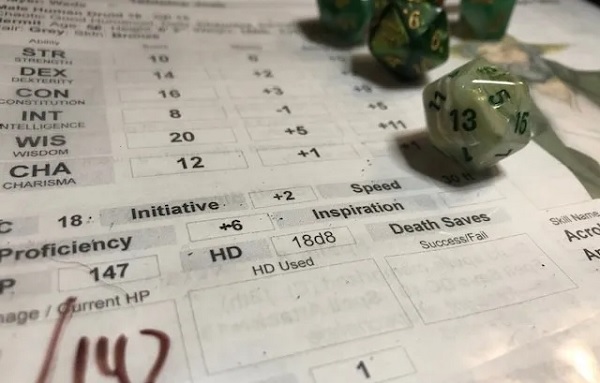
Pathfinder will help you save time by offering a bulky starting class loaded with helpful options like feats and ancestral traits. You’d feel that each class is complete without the need for multiple sourcebooks or DM adjustment. As your class levels up, it will gain more feats and traits that will improve your gameplay quality and enjoyment.
The Winner – Pathfinder 2E
In terms of accessible player options, Pathfinder is a solid winner. The overhauled classes and ancestries are enough to keep an adventure interesting. Plus, you won’t have a hard time plugging PF2E’s modular classes into the published ‘splatbooks’ of Pathfinder 1st Edition.
Rules of Combat
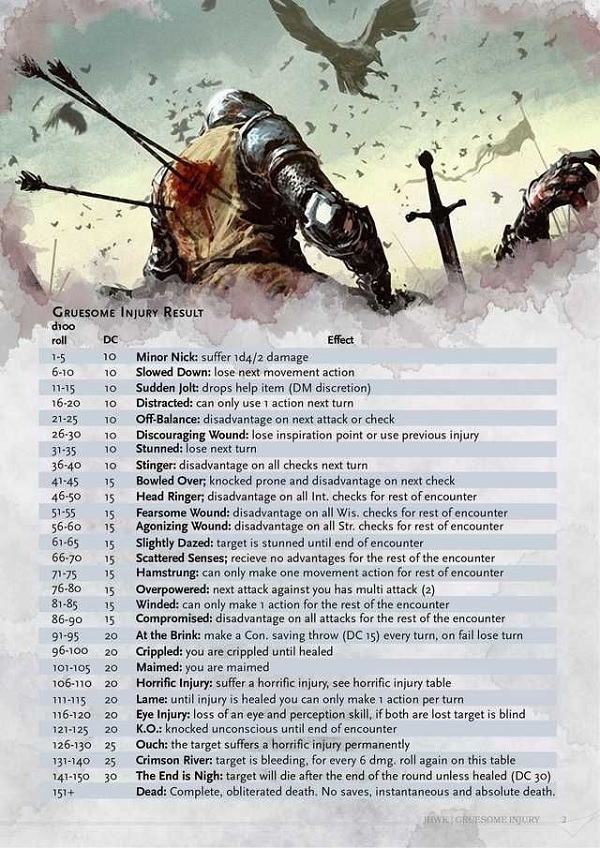
5E was the solution to the mind-boggling combat mechanics of D&D’s older editions. By using a simplified ‘action and movement’ approach, D&D 5E managed to gain the attention of a newer generation of TTRPG enthusiasts. Even today, 5E’s simplified combat rules still appeal to a wide range of gamers.
However, 5E’s combat simplicity led to boring and bland encounters. Martial classes were somehow limited to basic attack actions and extended movement. Casters were also limited, but they enjoyed the advantage of having variable spells. DMs had to implement additional house rules to make 5E combat more interesting.
Pathfinder changed the flow of combat in a simple yet beneficial way. Instead of having one action, a movement phase, and a bonus action, PF2E implemented a three-action system. This system means that players can take three actions and a bunch of free actions. Players felt more heroic with the three-action system, and combat encounters were resolved quickly.
More importantly, PF2E players can enjoy dynamic combat right out of the box. There’s no need to download additional rulebooks or supplemental combat materials.
The Winner – Pathfinder 2E
The king of dynamic combat mechanics is Pathfinder. Your character’s raw power and combat prowess will become more evident through the three-action system.
Spellcasting Mechanics
There are no differences when it comes to spellcasting in D&D 5E and PF2E. Both games use the Vancian magic system (spell slots) with minor variations here and there.

D&D 5E has separate spell lists for magic-using classes. A cleric has a different list than a druid, creating a balance of thematic limitations and utility. On the other hand, Pathfinder has simplified the magic system with only four lists: Arcane, Occult, Divine, and Primal.
While some players love the simplicity of PF2E’s spell lists, others prefer the variability offered by D&D 5E. In 5E, there’s a spell for nearly every situation, allowing players to escape disastrous situations. In a way, Pathfinder’s magic system is more realistic.
The Winner – D&D 5E
D&D 5E wins the spellcasting crown by a minor leap. The system allows players to access a wide variety of spells even though this can lead to lesser class variability (i.e. everyone can just be casters). On the other hand, Pathfinder’s realistic approach clearly defines the difference between magic users and martial classes. It can feel dragging for simple players who just want to slay monsters, but such is the way of the game.
Magic Item Variety
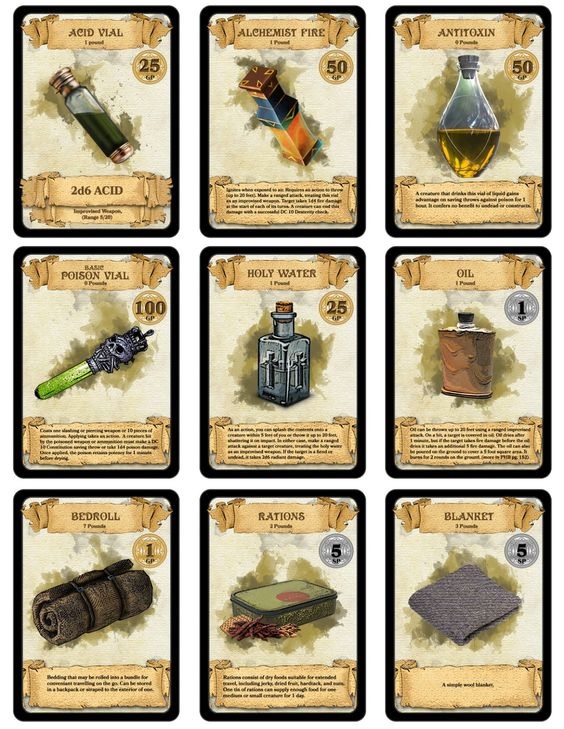
Magic items are some of the best rewards that players can get from any tabletop RPG. Through magic items, a player can achieve nearly impossible things and gain the upper hand against numerous enemies. Depending on the DM, a campaign can have tons of magic items or very little at all.
D&D 5E has tons of magic items for beginners and professionals alike. You can see these items in the Player’s Handbook and Dungeon Master’s Guide. Almost every sourcebook published also has a list of useful magic items. The 5E community also has a lot of homebrewed magic items accessible through websites, blogs, and shareable PDFs.
Pathfinder 2E’s pool of magic items is also large, but less popular than 5E. If you’re eager to look for items, you can simply visit the Archive of Nethys and check out the available options from Pathfinder 1st Edition and 2nd Edition.
The Winner – D&D 5E
D&D 5E wins the magic item variety section on the grounds of popularity. It’s not surprising that many beginners are more aware of 5E’s magic items than the ones from PF2E. Perhaps a few years down the line, Pathfinder 2nd Edition will get the recognition that it truly deserves.
DM Management
Being a DM is a difficult job. As a DM, you need to wear different hats like the narrator, organizer, scheduler, worldbuilder, writer, consultant, and arbiter of rules. If your chosen role-playing game (RPG) system has numerous moving parts, you might have a hard time running a session.
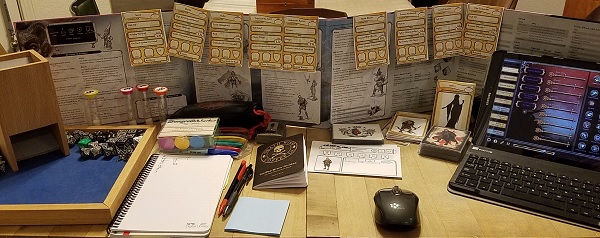
D&D 5E is a great choice for beginner DMs. The core books have everything you need such as an explanation of rules, starting options, encounter tables, and even NPC creation guides. But as you gain experience in DMing, you might feel the urge to use a complete system that doesn’t need a lot of DM output.
Pathfinder solves the DM output problem by providing a functional ruling system that runs from A to Z without any major hindrances. One of the best examples is PF2E’s dynamic combat mechanics. If you’re pressed for time but totally understand the rules of PF2E, you can prepare a decent combat encounter within 30 minutes or less. Well, you can do the same with 5E, but you might get into tricky situations later because of vague rules. In Pathfinder, there are almost no vague situations – everything is attached to a rule.
The Winner – Pathfinder 2E
Pathfinder 2nd Edition is the ace of DM management. It has concrete rules for everything, allowing you to focus on weaving stories and plot threads. Think of PF2E as an engine that will do the hard work for you. But first, you need to understand how the engine works from top to bottom!
Theme Adaptability
Each campaign falls into a unifying theme, even if you claim that it is theme-less. Once you’ve chosen a theme for your campaign, all of the major pieces will fall into place and you can create a big outline immediately. Now, all you need is a system that will merge easily with your campaign theme.
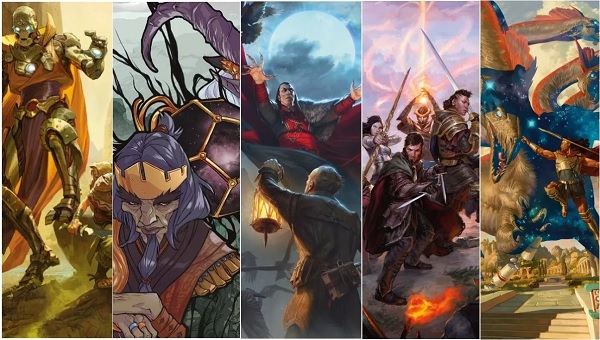
D&D 5E is commonly used in multiple campaign themes such as high fantasy, low fantasy, horror, Anime, and even a holiday special. You can even see themed 5E adventures related to big titles like Rick and Morty and Adventure Time. 5E’s theme of adaptability is one of the reasons why it is popular around the world.
Pathfinder 2nd Edition is a robust system on its own, but it can’t be used on a specific theme without a lot of modular adjustments. Let’s say you’re planning to run a space-themed campaign under PF2E. In this case, you need to adjust ancestral descriptions and the nature of all the feats within the rulebook. The prep time will take more than three hours at least, depending on how meticulous you are. Well, if you want to save time and run a space opera, choose Starfinder instead!
The Winner – D&D 5E
D&D 5E can adapt faster to any given theme. All you have to do is to understand the basic rules and plug your story elements right away. You can also download homebrew options related to your theme.
Epic Play
Getting a table to reach the epic tier of gameplay is a difficult process. It will take a long time and a great deal of concentrated effort to break through epic levels. Some players might even leave the campaign because of life issues and other reasons.
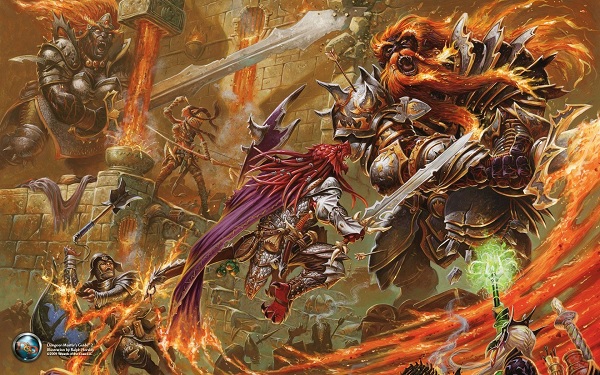
D&D 5E is fully equipped to bring players from Level 1 to 20. However, the gameplay experience beyond Level 20 undergoes massive changes. Mechanically, DMs have to make lots of adjustments because players can breeze through any encounter. The adjustments usually involve narrative tweaking, HP inflation, and the implementation of new homebrew mechanics. If you’re thinking that such an adjustment is hard work, well, you are right!
To support your players for epic play, you should use a stable that won’t collapse under the weight of its own bulk. In this case, the Pathfinder rule system is best because of its structured support for every class level. Every time a character levels up, it gains one feat and other mechanical bonuses. Such an effective style of progression will ensure that players can handle the challenges imposed by epic-tier gameplay.
The Winner – Pathfinder 2E
Pathfinder is the simple solution to a difficult epic tier gaming problem. The system guarantees extensive support per class level, and it is even compatible with other epic tier sources from the Pathfinder 1st Edition.
FAQ About Pathfinder 2E and D&D 5E
Is Pathfinder 2E better than D&D 5E (Pathfinder Living Games)?
Answer: It’s somehow tricky to declare that PF2E is better than 5E because the system has its fair share of strengths and weaknesses. The same thing can be said for 5E even though it is more popular and beginner-friendly.
Why should I play Pathfinder 2E?
Answer: You should play PF2E if you’re looking for a deeper way of playing an RPG. Pathfinder guarantees dynamic combat encounters and in-depth adventuring mechanics. Your Pathfinder character will also grow continuously through the acquisition of feats per level.
Why should I play D&D 5E?
Answer: If you’re eager to play a character empowered by different sources of magic, D&D 5E is your best choice. Additionally, 5E will let you make a character in less than 30 minutes so you can have fun right away.
Is the 2E Pathfinder Character Customization crunchier than Pathfinder 1E?
Answer: No, Pathfinder 1E is a crunchier beast than Pathfinder 2E. In 1E, you will encounter tons of scattered modifiers and complicated combat rules. Since 1E has hundreds of sourcebooks, the level of discrepancy between rules is evident.
What system is better for a one-shot? D&D 5E or PF2E?
Answer: If you’re planning to run a one-shot adventure, you should start with D&D 5E. The 5E system is easier to plug with any theme or campaign idea, and there’s a big room for creative freedom. Still, you can always run a one-shot with PF2E but the prep time is longer.
Is it difficult to prep a PF2E game?
Answer: It depends on your experience. If you’re an experienced DM, you will just have a slightly longer time reading the rules. Since the PF2E Core Rulebook is modular, you don’t have to ‘wing out’ everything.
Final Notes
D&D 5E and Pathfinder 2E are excellent yet imperfect systems. As a dedicated RPG enthusiast, you must explore 5E and PF2E to determine the features that you like. You might even learn to appreciate both systems over time. Despite having their fair share of differences, painting your own minis for a more customized experience is never wrong.
Do you have an experience in D&D 5E and Pathfinder 2E? Tell us in the comments below!


